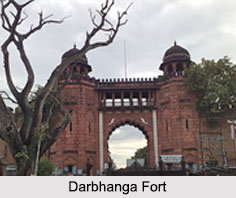 Also known as the Ram Bagh Fort because of it location within the Rambagh Palace, the Darbhanga Fort is situated in the city of Darbhanga in the Indian state of Bihar. It is one of the iconic monuments in the state and is worth a visit because of its historical significance.
Also known as the Ram Bagh Fort because of it location within the Rambagh Palace, the Darbhanga Fort is situated in the city of Darbhanga in the Indian state of Bihar. It is one of the iconic monuments in the state and is worth a visit because of its historical significance.
History of Darbhanga Fort
When the land where the fort currently stands came under the control of the progeny of Maharaja of Darbhanga, Shri Kameshwar Singh, the Darbhanga Fort was established in 1930. Prior to the formation of the fort, this area was a part of the village named Islampur, which was under the control of Nawab Alibardi Khan of Murshidabad State.
Architecture of Darbhanga Fort
Built prior to India gaining independence, a company of erstwhile Calcutta was contracted to build the Darbhanga Fort. Built with red bricks, the walls of the fort are thick and about a kilometre long. There is also a watch tower and guard house that was built on the upper part of the wall. When the construction of the fort was completed on three sides and the wall of the western part was being constructed, at that time India got independence from the British rule.
The main gate of the Darbhanga Fort is called Sinhala, which has rare scenes inscribed on it. Surrounding the wall within the fort, there was a ditch constructed, which was filled with equal water in the trench for the protection of the fort.
Visiting Information on Darbhanga Fort
The Darbhanga Junction is the nearest railway station from the fort at a mere distance of about 2.2 km and the Darbhanga Airport is the closest at a distance of 7 km from the fort.
This article is a stub. You can enrich by adding more information to it. Send your Write Up to content@indianetzone.com.






